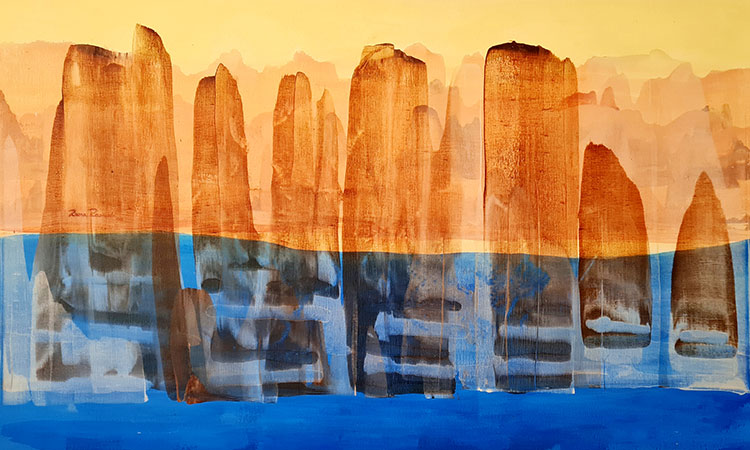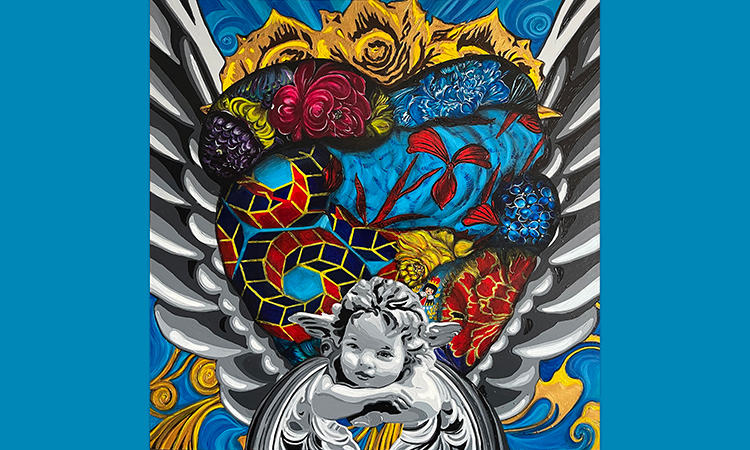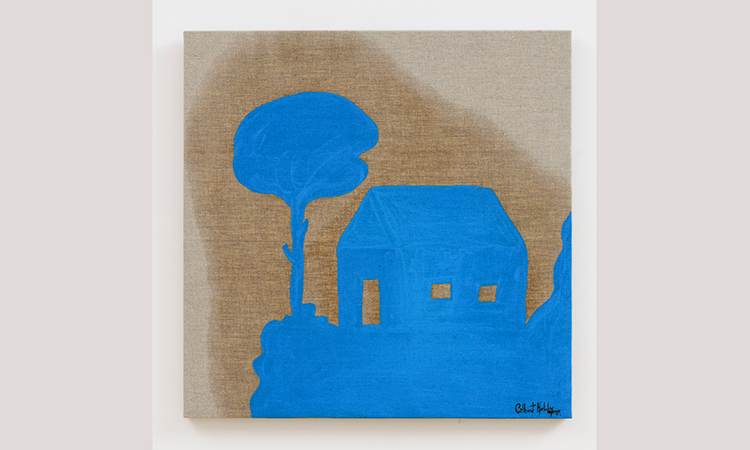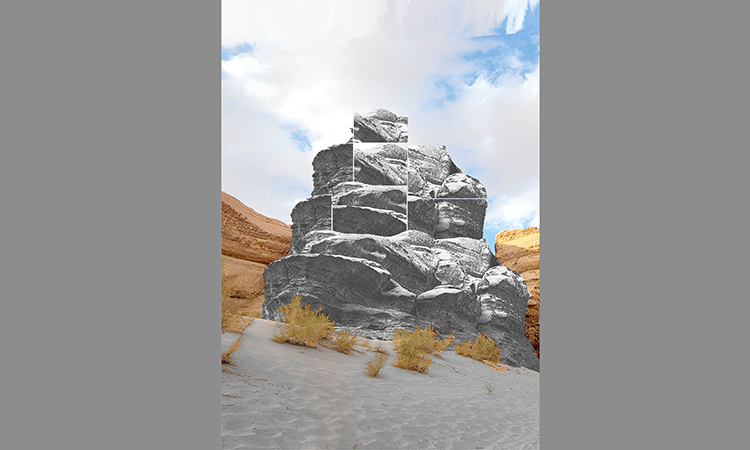Lebanese architect Nour Rouhana blends past, present in historic RAK fort

Nour Rouhana’s design of the Dhayah Fort in Ras Al Khaimah.
Sohaila Ahmed, Staff Reporter
“A one-time trip to Dhayah Fort had ignited my passion to explore the unique history of the UAE, as I was struck by ideas of how to blend the past and future together in an architectural mountain view.” With these words, architect Nour Rouhana shared her perspective on her graduation project thesis, which discussed transforming Dhayah Fort in Ras Al Khaimah into a lively tourist destination.
The 22-year-old architecture graduate is a Lebanese national who was born and brought up within the arms of her second home country the UAE, after her family had moved here 34 years ago, to be raised around a remarkable culture of history and modernisation.
During her study at the American University in Dubai (AUD), Nour Rouhana paid a visit to Dhayah Fort two years ago, and was overwhelmed by the stunning view of four different sights seen from the top of the fort: the Arabian Gulf, the desert, mountains and greenery.

The fort had inspired her to discover and dig deep into the rich history of the UAE, and the big steps it took towards modernisation within a few years. “The UAE’s transformation from a scorching desert to a timeless, metropolitan, and global city is stunning,” Nour said.
As Dhayah Fort is a cultural icon, the creative young architect believed she could project modernisation into it, by integrating the city with heritage, saying “why not create something that manifests the fort, and make it more accessible to all people by creating a road that reaches to it in order to enjoy and make use of the views around it?”
Nour started the project by recording her theories in a book that highlighted the history of the UAE in general, narrowing it down to Ras Al Khaimah and Dhayah Fort’s history. Means of transportation from the foothill to the top of the fort were brought to light in her graduation thesis.
However, she passionately searched around for global landmarks with similar features of the fort, to be inspired by three different means of transportation used by designers in various countries.

The first method was inspired by designers in Mount Tianping Cliff in China, in which an elevator was used to transport visitors from the bottom to the top of the cliff. While the second method was inspired by Sigiriya Rock in Sri Lanka where a spiral staircase is used to reach the top; and a third method used in Spain, Escaleras de la Granja, where escalators are utilised as transportation.
Additionally, the three methods were imbibed in Nour’s architectural project, in which she added recreational activities within the mountain such as diving, planting, bird-watching and hiking, adding a special feature to the site. “Tourists and visitors will now be able to blend in the magical heritage of Dhayah Fort, while enjoying various activities to discover its beauty,” she added.
The virtual project discusses the establishing of various rooms, including an administration office, a coffee shop with a pristine view of nature, a museum or an art gallery, yoga room for fitness enthusiasts, as well as a diving area which allows divers to see the interior of the mountain.

Nour Rouhana illustrated how she was captivated by the beauty of the UAE, admiring its magical past and contemporary present; pointing out that her passion towards it will last forever and showing great gratitude to the wide opportunities provided to all talented people by the UAE.
Nevertheless, the gifted architect had also taken part in multiple architectural contests in an attempt to showcase her innovational project, and had won the second place in Britain’s international competition ‘Arts Thread Global Design Graduate Show 2020’ which included more than 1,500 students and was run by the world’s most famous architects.
Being the first Arab student to win such a contest, Nour highlighted her aspirations to work on more inspiring projects such as building a nursing house for the elderly back in her home country Lebanon, especially after visiting a couple of nursing houses and not approving of their living conditions.
“I have designed a project for a nursing house during my school years at AUD, and implemented all the necessities I believed that they should have, such as giving each person his own space where they could carry out activities and maintain a healthy lifestyle,” Nour stated.







